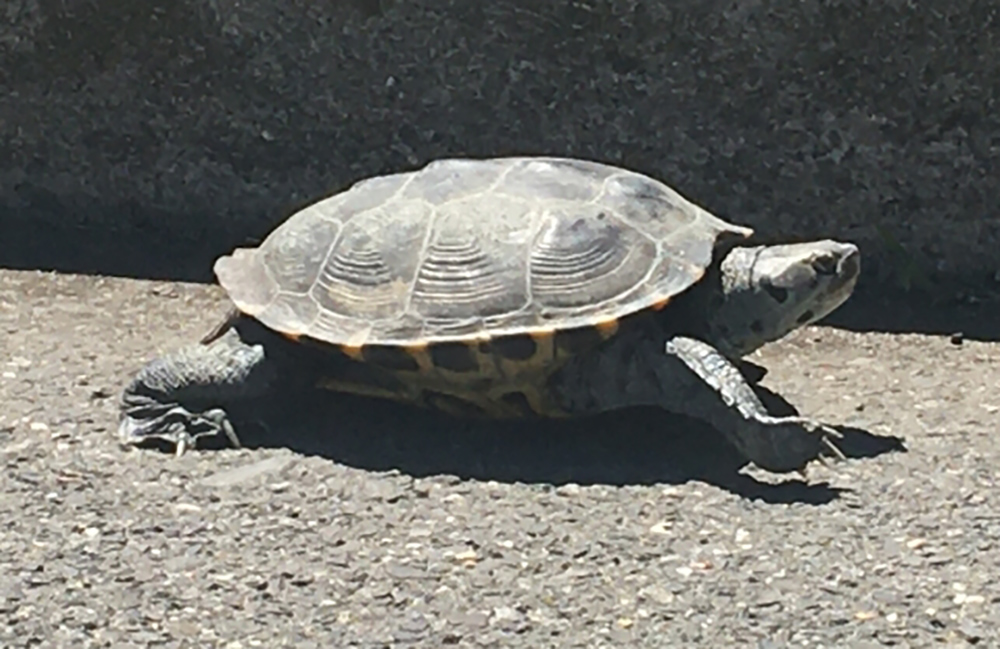In South Jersey, we are lucky to live in a diverse ecosystem. In recent weeks, the diamondback terrapins have re-appeared throughout much of the local region, and work is actively underway to ensure their safety and to bring awareness of their presence.
The Margate Terrapin Rescue Project, a group that is dedicated to helping diamondback terrapins, led a volunteer effort to install roadside barriers along the Margate Causeway last month. The non-profit organization also operates daily patrols during peak nesting season, which begins in early June and can last until mid-July. Kimberly Weich, Primary Coordinator and President of the Nonprofit, says community volunteers play a major role in tracking data and other vital information. “Essentially, people from the community are doing the same work as scientists.”

The volunteers’ role is to monitor the roadway for terrapin activity, and safely and securely move the diamondbacks from one side of the road to the other. Additionally, they use a phone app to collect information, such as location, terrapin status, if the turtle was nesting, and if the nest is protected. At the end of each season, the data collected is then submitted to the New Jersey Fish and Wildlife Service, which, in turn, releases a compilation of all species in the state.

Diamondback terrapins can be found up-and-down the East Coast. Their average lifespan is 25 years, with many tagged, locally by Wetlands Institute, to be 19 years or older. While many people don’t often think of diamondback terrapins as very important to our ecosystem, they are vital to keeping everything in check. Terrapins typically feed on periwinkle, an aquatic snail that can be found in salt marshes. Without terrapins, the snails can wreak havoc on all the salt marshes and the tributaries, as Weich explains. “Once you decimate those grasses, you’re just left with mud flats, and they don’t absorb nearly as much of an impact of a storm or lesson the blow of a nor’easter as opposed to a healthy salt marsh.”

In recent months, new road signs have been placed along the Margate Causeway, with indicators t warn drivers of the turtles’ presence at peak season. If you see a turtle walking along the road, you can stop your vehicle, if it is safe, and move them to the other side of the road. It is important to place them in the direction they were traveling. “If you put them back, they will turn right back around and try again,” says Weich.
While diamondback terrapins are docile creatures, they can have very powerful jaws. For that reason, Weich warns not to put your fingers near their face or mouth. It is also important to pick them up from both sides of their shell, or by placing one hand underneath and one on the side or back. Afterwards, be sure to wash your hands thoroughly, as, like all turtles, they can carry salmonella and other types of parasites and diseases.
We can all do our part to ensure the diamondback terrapins safety and survival this season. If you should spot a turtle in your neighborhood, you can record your observation using the iNaturalist app. Updated information on the Margate Terrapin Rescue Projects and their continued efforts can be found online at margateterrapinrescue.org.
Photos by Steffen Klenk
Steffen Klenk is a multimedia journalist. He resides in Ocean City and enjoys capturing the eclectic moments of shore life
Click below to read more about turtle rescue efforts
https://www.shorelocalnews.com/turtles-get-a-helping-hand/#more-23275










